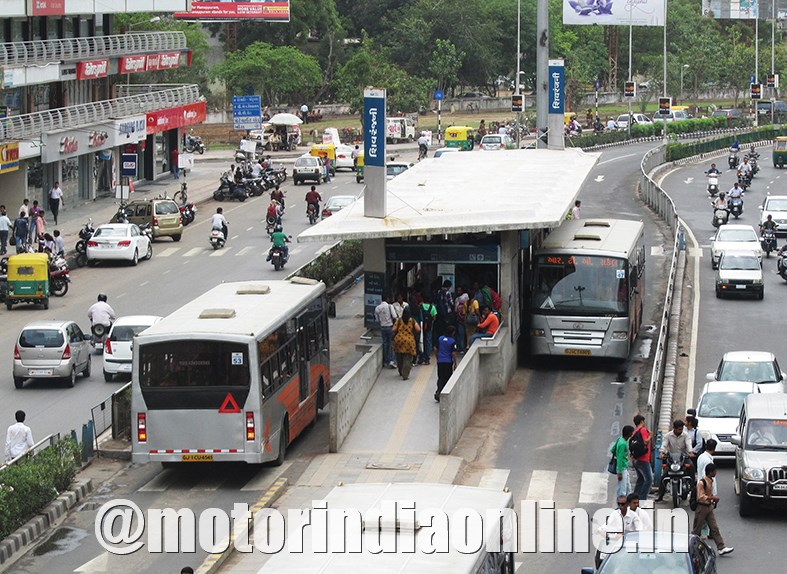#InTimesofCorona – Prioritizing public transport
It’s high time we prioritize public transport as a critical strategy in our COVID response, which can help restore people’s trust on buses as safe and affordable mobility option to rely on.
The 2020 has been a nightmarish year for public transport across the globe. There has been a rapid and massive fall in ridership in mass transit systems and inter-city passenger transports owing to lockdown and restrictive measures, coupled with the fear among users on the risk of contagion while travelling in enclosed spaces of trains and buses. Sudden disruptions in access to mobility and changes in work culture, financial and social circumstances of the commuters have also led to significant shifts in mobility patterns favoring personal mobility. In India, since the month of June, there has been a strong demand for personal vehicles – especially ‘commuter’ bikes and ‘budget’ cars – despite economic slowdown and poor market sentiments, as people are looking for personalized and sanitized mobility options to avoid crowded public transport.

First things first, we have to understand that there is very little evidence to suggest that public transportation is a significant disease vector. Epidemiologists are unsure that riding in public transit is riskier than other social activities that people engage in pandemic times, say going to restaurants or Diwali shopping, as long as all passengers wear face masks that cover their noses and mouths. On the other hand, a society’s disbelief on public transportation can bring catastrophic effects during a pandemic, as use of personal vehicles will increase air pollution in cities, which in turn will make people more susceptible to COVID-19 and every other lung-related illnesses. Our capital territory Delhi is a classic example to this argument, as the region is now reeling under ridiculously poor quality of air for over three months now.
But yes, in societies like India, compliance to mask usage in public places and inside crowded city buses or bus stops can be problematic. More than lack of awareness, the callous and lackadaisical attitude towards COVID safety guidelines among our people is really worrying. Delhi is an apt example to this point as well, as the case numbers are hitting new high every day at present, despite an initial slump after lockdown. So, what else can be done to make public transportation more appealing and safer in pandemic times? To start with, we have to realize that it is not just the safety issue that is driving commuters towards personal vehicles, but also an inadequate and fractured public transit infrastructure that is hazy on various aspects of mobility and related services, not just safety. Thus, any effort to improve commuters’ trust on public transportation in India should take into account the infrastructural gap and seamless service delivery.
Since Unlock 1.0, there has been a slew of calls from the domestic bus industry and transport experts to prioritize public transport in COVID-19 response strategies of various governmental agencies. This included not just financial support from governments to public and private operators to sustain their operations with limited occupancy and procurement of additional fleet to meet physical distancing norms, along with tax waivers and extension of loan moratorium, but also in terms of knowledge transfer and capacity building in sync with national policy on hygiene and physical distancing on public transport. But several months have passed, there seems to have very little or no strategy that embeds public transportation in COVID response. MoRTH could have at least taken World Bank’s COVID-19 Green Label Certification programme for public transportation a bit seriously. As usual, a golden opportunity was lost in useless cacophony!
Although both STUs and private operators have demonstrated enough resilience in surviving months of lockdown and new normal thereafter, thanks to decentralized approach towards transport management and decision making by municipal and state governments, the state of affairs of bus transportation is still in bad shape than before. Since buses are the most affordable means of public mobility in our country that help masses to access livelihood and other essentials including healthcare, any disruption and deficiency may result in widespread socio-economic and environmental impacts – something that we can’t risk in a pandemic era. It’s high time we prioritize public transport as a critical and active strategy in our society’s COVID response at all levels, along with decentralized plans and financial support mechanisms to address the infrastructural deficit, that can restore commuters’ trust on public transit systems, buses in particular, as safe, reliable and affordable mobility choice in times of the coronavirus pandemic.